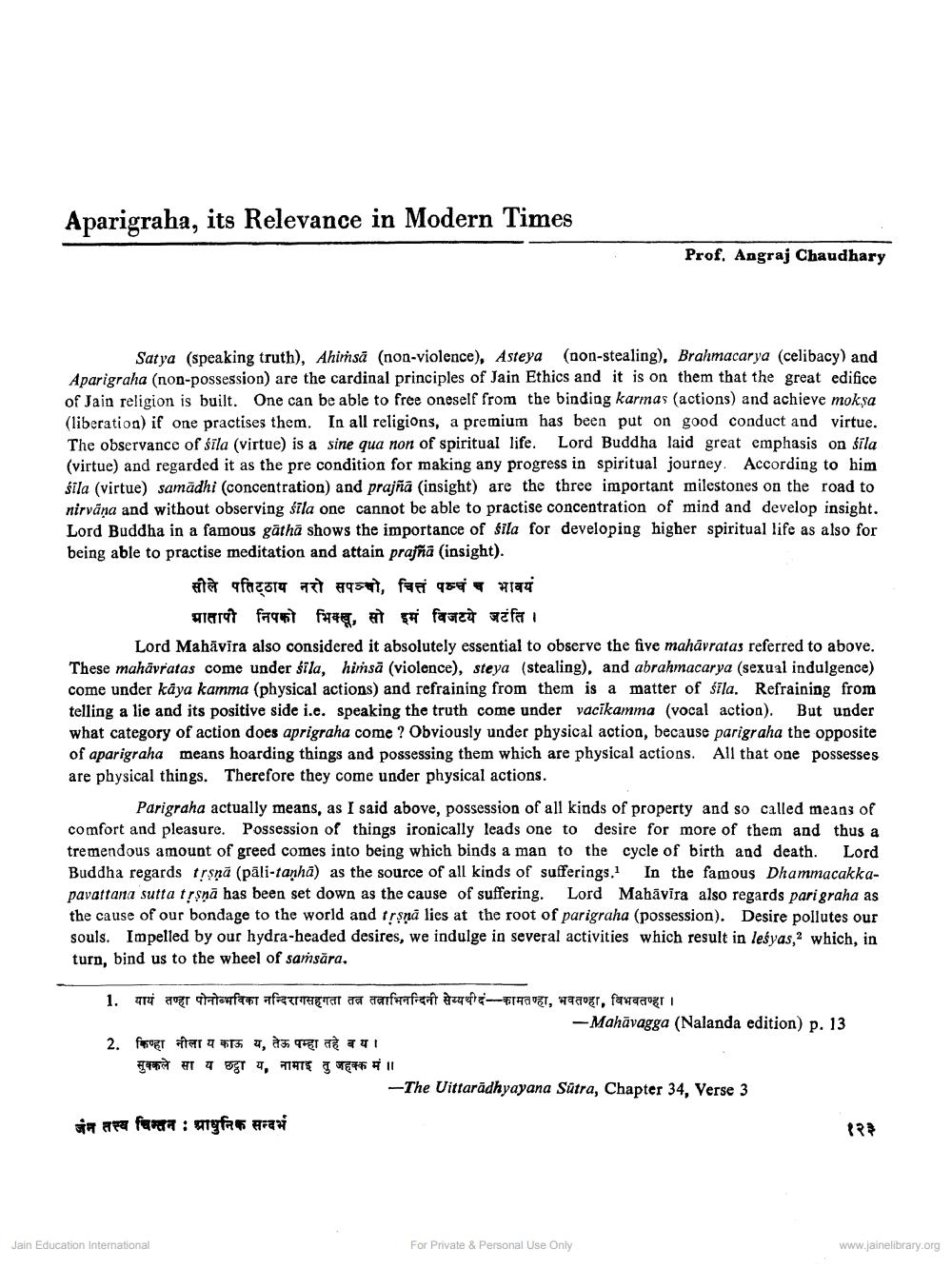________________
Aparigraha, its Relevance in Modern Times
Satya (speaking truth), Ahimsa (non-violence), Asteya (non-stealing), Brahmacarya (celibacy) and Aparigraha (non-possession) are the cardinal principles of Jain Ethics and it is on them that the great edifice of Jain religion is built. One can be able to free oneself from the binding karmas (actions) and achieve mokşa (liberation) if one practises them. In all religions, a premium has been put on good conduct and virtue. The observance of sila (virtue) is a sine qua non of spiritual life. Lord Buddha laid great emphasis on sila (virtue) and regarded it as the pre condition for making any progress in spiritual journey. According to him śila (virtue) samādhi (concentration) and prajñā (insight) are the three important milestones on the road to nirvāṇa and without observing sila one cannot be able to practise concentration of mind and develop insight. Lord Buddha in a famous gatha shows the importance of sila for developing higher spiritual life as also for being able to practise meditation and attain prajña (insight).
सीले पतिट्ठाय नरो सपञ्चो, चित्तं पञ्चं च भावयं
भातापी निपको भिक्खु, सो इमं विजटये जयंति ।
Lord Mahāvīra also considered it absolutely essential to observe the five mahāvratas referred to above. These mahāvratas come under sila, himsā (violence), steya (stealing), and abrahmacarya (sexual indulgence) come under kaya kamma (physical actions) and refraining from them is a matter of sila. Refraining from telling a lie and its positive side i.e. speaking the truth come under vacīkamma (vocal action). But under what category of action does aprigraha come? Obviously under physical action, because parigraha the opposite of aparigraha means hoarding things and possessing them which are physical actions. All that one possesses are physical things. Therefore they come under physical actions.
Parigraha actually means, as I said above, possession of all kinds of property and so called means of comfort and pleasure. Possession of things ironically leads one to desire for more of them and thus a tremendous amount of greed comes into being which binds a man to the cycle of birth and death. Lord Buddha regards tṛṣṇā (pali-tanha) as the source of all kinds of sufferings.1 In the famous Dhammacakkapavattana sutta tṛṣṇā has been set down as the cause of suffering. Lord Mahavira also regards pari graha as the cause of our bondage to the world and tṛsna lies at the root of parigraha (possession). Desire pollutes our souls. Impelled by our hydra-headed desires, we indulge in several activities which result in lesyas, which, in turn, bind us to the wheel of samsăra.
1. यायं तव्हा पोनोब्भविका नन्दिरागसहगता तत्र तत्राभिनन्दिनी सेय्यथीदं - कामतण्हा, भवतण्हा, विभवतहा ।
2. किण्हा नीला य काऊ य, तेऊ पम्हा तहे ब य । सुक्कले सा य छट्ठा य, नामाइ तु जहक्क मं ॥
Prof. Angraj Chaudhary
न तस्य चिन्तन आधुनिक सम्यर्भ
Jain Education International
-Mahāvagga (Nalanda edition) p. 13
-The Uittaradhyayana Sutra, Chapter 34, Verse 3
For Private & Personal Use Only
१२३
www.jainelibrary.org




